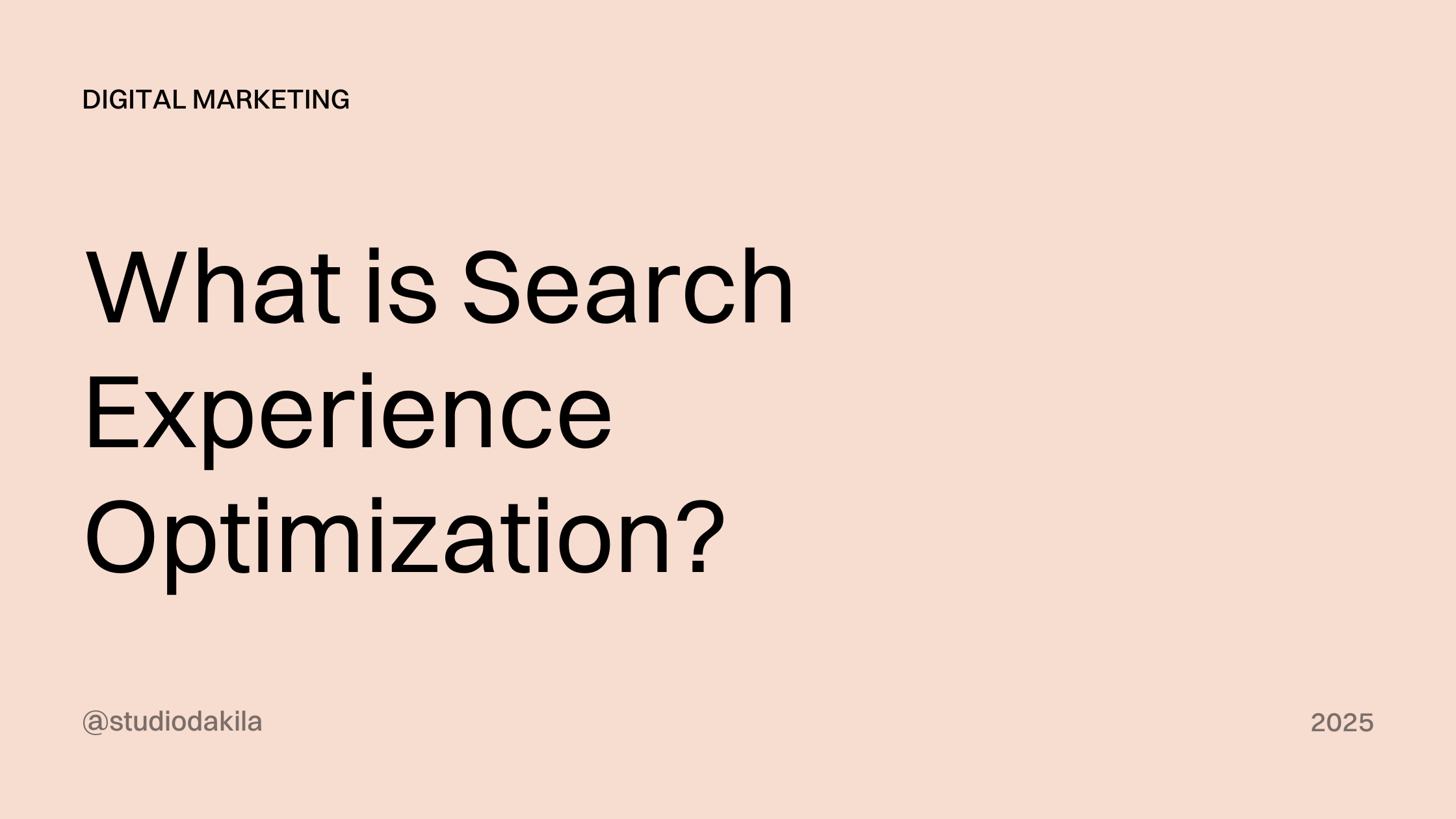Search Experience Optimization (SXO) represents the critical evolution of digital marketing strategy that bridges the gap between technical SEO and user experience design. While traditional SEO focuses primarily on improving search visibility and rankings, SXO expands this focus to optimize the entire search journey—from the initial query to meaningful user engagement with your content.
SXO represents the evolution of SEO beyond rankings to focus on the quality of search interactions. SXO considers how users engage with search results, click-through rates, and whether content satisfies search intent. It bridges technical SEO and user experience by optimizing the journey from search query to content consumption.
This integration is increasingly crucial as search engines like Google continue to refine their algorithms to prioritize user satisfaction over technical compliance alone.
The Three Interconnected Pillars of Digital Marketing Success
To truly understand what SXO is, we must examine the three core disciplines it connects:
Search Engine Optimization (SEO)
Traditional SEO encompasses technical elements like site structure, metadata, keyword optimization, and backlink profiles. Its primary goal has always been improving rankings to drive organic traffic. For SEO for B2B companies, this traditionally meant focusing on industry-specific keywords and building domain authority through technical optimization.
Search Experience Optimization (SXO)
Search experience optimization serves as the bridge between technical requirements and user needs. It ensures that content not only ranks but also satisfies the intent behind searches. SXO considers how your content appears in search results and whether it delivers on the promises made in meta titles and descriptions.
User Experience (UX)
User Experience (UX) centers on how people interact with digital products and content. UX design principles focus on usability, accessibility, visual hierarchy, and creating intuitive, frictionless experiences. Its success metrics include engagement, conversion, and satisfaction rather than visibility or traffic.
Understanding why is user experience design important becomes clear when we recognize that even perfectly optimized content fails if users find it difficult to consume or navigate.
The Historical Divide and Why Integration Matters
Traditionally, SEO and UX operated with different priorities and sometimes conflicting goals. SEO practitioners focused on satisfying search engines, often at the expense of user experience. Meanwhile, UX designers created beautiful, functional interfaces without considering search visibility. This division created websites that either ranked well but frustrated users or delighted users but remained undiscovered.
Several factors have driven the convergence of these disciplines into what we now recognize as SXO:
- Algorithm Evolution: Search engines now prioritize user experience signals like page speed, mobile-friendliness, and interaction metrics. Google’s Core Web Vitals explicitly measure UX factors and incorporate them into ranking decisions.
- Changing User Expectations: Users expect seamless experiences from search to conversion. A site that ranks well but delivers poor experience quickly loses trust and engagement.
- Competitive Pressure: As technical SEO becomes more standardized, user experience increasingly differentiates successful sites from their competitors.
- Data Integration: Analytics now connect search performance with user behavior, making it easier to see how SEO and UX impact each other.
This convergence is especially important for any creative agency seeking to deliver both visibility and engagement for clients across diverse industries.
The Circular Relationship Between SEO, SXO, and UX
What makes SXO so powerful is the circular, reinforcing relationship it creates between technical optimization and user experience:
- SEO Impacts UX: Technical SEO factors like site speed directly affect user experience. Content structured for search visibility with clear headings and concise paragraphs also improves readability and usability. When SEO drives relevant traffic, users arrive with expectations that align with your content, improving their experience.
- UX Influences SEO: User-friendly designs reduce bounce rates and increase time on site, sending positive signals to search engines. Intuitive navigation helps search engines understand site structure and content relationships. Engaging experiences encourage backlinks and social shares, boosting authority signals.
This interconnection means improvements in one area cascade through the entire system. When you optimize page speed for technical SEO, you simultaneously enhance user experience. When you improve content readability for users, you also strengthen relevance signals for search engines.
The Human Element in Technical Optimization
At the heart of this convergence lies a fundamental truth: behind every search query stands a human with specific needs, questions, and contexts. Technical excellence only matters when it serves human objectives.
Modern SXO approaches recognize that:
Consider keyword research, traditionally seen as a technical SEO task. Modern keyword research goes beyond volume and competition to understand the intent, context, and emotional drivers behind searches. It asks not just “what words do people use?” but “what problems are they trying to solve?”
Similarly, content optimization now extends beyond keyword placement to consider readability, engagement, and comprehensiveness. The best content satisfies both algorithms and human curiosity. It answers questions thoroughly while remaining accessible and engaging.
Even technical elements like structured data serve dual purposes. While structured data helps search engines understand content, it also enhances user experience through rich results that provide immediate value directly in search results.
Implementation Strategies for SXO Integration
For organizations looking to implement effective SXO strategies, consider these practical approaches:
- Unified Planning: Include both SEO and UX stakeholders from the beginning of projects. Develop shared KPIs that balance visibility with engagement and conversion metrics.
- Intent-Focused Content: Build content strategy around satisfying user intent rather than just targeting keywords. Map content to each stage of the customer journey, ensuring you meet needs at every touchpoint.
- Technical UX Optimization: Prioritize technical improvements that benefit both search engines and users. Page speed, mobile responsiveness, and secure connections represent the foundation of both good SEO and good UX.
- Holistic Measurement: Develop reporting that connects search performance with user behavior. Track the journey from search visibility through engagement to conversion to identify opportunities for improvement.
- Continuous Testing: Implement regular testing of both search performance and user experience. A/B test not just for conversion but also for engagement metrics that influence search rankings.
- Cross-Training Teams: Ensure SEO specialists understand UX principles and UX designers grasp SEO fundamentals. This shared knowledge facilitates better collaboration and integrated solutions.
The Future of SXO: Where Digital Marketing is Heading
The future of SXO will likely be shaped by several emerging trends:
- AI and Machine Learning: Search engines increasingly use AI to evaluate content quality and user satisfaction. This makes technical manipulation less effective while rewarding genuinely valuable user experiences.
- Voice and Visual Search: These emerging search modalities blur the lines between traditional SEO and UX even further, requiring content that works across multiple interfaces and interaction models.
- Zero-Click Experiences: As search engines provide more answers directly in results, SXO becomes crucial for capturing attention and driving engagement even before users click.
- Privacy Changes: With third-party cookies disappearing and privacy regulations tightening, the quality of organic search experiences becomes even more important for building first-party relationships.
These developments underscore why SXO will only become more essential for digital marketing success in the years ahead.
Bringing Humanity to Technical Marketing Through SXO
The convergence of SEO, SXO, and UX reflects a broader truth about effective digital marketing: technical excellence must serve human needs. Algorithms increasingly evaluate content based on how well it serves users, not just how well it follows technical rules.
For marketers, this convergence offers an opportunity to move beyond technical optimization toward creating genuinely valuable digital experiences. By understanding how SEO, SXO, and UX intertwine, we can develop strategies that satisfy both algorithms and humans.
The most successful digital experiences don’t force users to choose between findability and usability. They deliver both through thoughtful integration of technical optimization and human-centered design. In doing so, they transform marketing from manipulation to service, creating sustainable value for both organizations and their audiences.
Key Takeaways
- SXO bridges the gap between technical SEO and user experience to create holistic digital strategies.
- Successful SXO implementation creates a virtuous cycle where improvements in one area enhance performance in others.
- The future of digital marketing belongs to those who integrate technical excellence with human-centered design.
Elevate Your Search Experience with Strategic SXO
Transform your digital presence with integrated SXO strategies that deliver both visibility and engagement.
Frequently Asked Questions
SEO primarily focuses on technical optimization for search visibility, while SXO expands this to include the entire user journey from search to engagement.
SXO helps ensure your content not only ranks well but also delivers on user expectations, improving engagement metrics and conversion rates.
Track metrics that span the entire user journey—from search visibility and click-through rates to engagement metrics, conversion rates, and satisfaction indicators.

